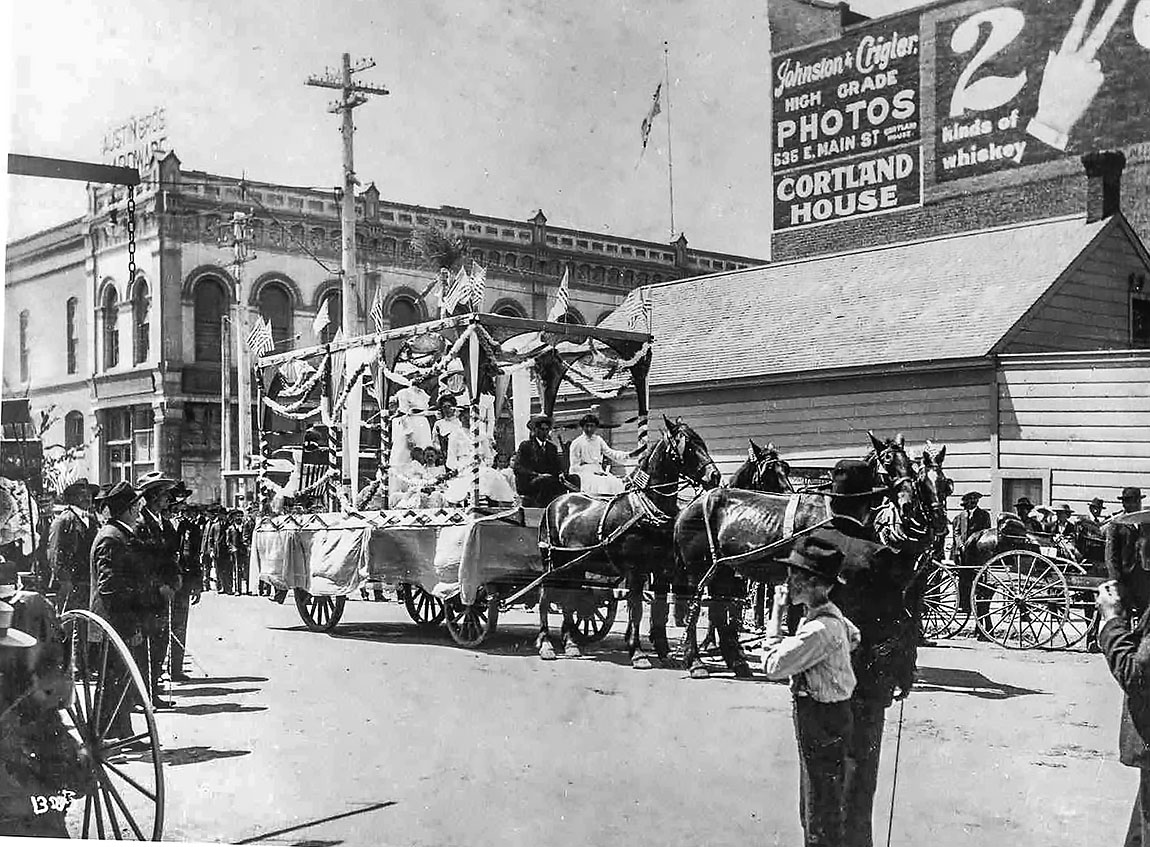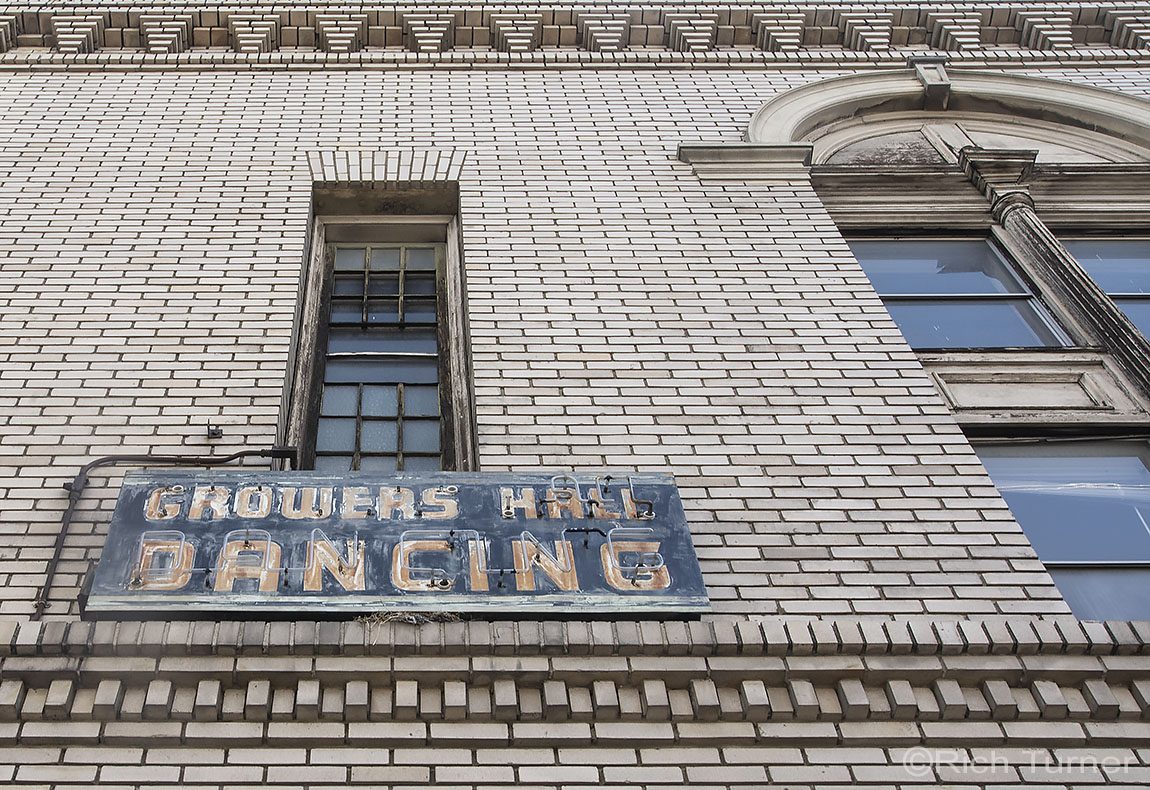“Truck Farming” Was the Path into Agriculture
- By David Stuart
- Photographs by As Noted
- May 16, 2019
- 7:27 pm
- 3 Comments

No, truck farmers didn’t grow trucks…rather, truck farmers were small-acreage family farmers who grew a variety of vegetables and fruits that were delivered by small trucks and horse-drawn wagons for sale at the Stockton Growers’ Market and other markets in the region. Truck farming was the entry point into self-directed agriculture in San Joaquin County, especially for immigrant Italians and Japanese from about 1900 into the 1940s.
The barriers to entry into truck farming were low compared to larger-scale agriculture. Relatively little money was needed to lease a small plot of land, acquire simple farm equipment—typically small implements that could be pulled by a team of horses or later a small tractor, such as a Fresno scraper, a single plow, and a harrow—and a small truck or wagon to transport the produce to market. On the other hand, the “sweat equity” was high; usually the entire family worked long hours as there were no hired workers.

Truck farmers grew season-specific crops year-round to best use their family labor force; to spread out the risk of crop failure or low prices; and to have an ongoing cash flow. Thus they introduced many new varieties of vegetables and fruits that came to represent the diverse agriculture of the region. Among the vegetables and fruits grown by truck farmers were: asparagus, beets, bell peppers, broccoli, Brussels sprouts, cabbage, cantaloupe, carrots, cauliflower, celery, cucumbers, eggplant, green beans, lettuce, onions, parsley, peas, radishes, rhubarb, tomatoes, turnips, spinach, squash, strawberries, watermelons, and zucchini.
The immigrant truck farmers came from agricultural traditions in Italy, Japan, and other regions that featured intensive farming. Although they developed their truck farms on sandy loam soils less-desirable for growing grain, they developed small-scale irrigation systems for their plots and managed the soils for heightened productivity.

Although Italians had been in California since the Gold Rush, there was an influx of Italians to Stockton around 1900. Gaetano Alegretti’s grocery and saloon was a gathering place for the immigrants and in 1902 Alegretti helped form a “mutual benefit society,” the Societa Italiana dei Giardinieri (“Italian Gardeners’ Society,” the closest translation for “truck farmers”).
In 1922 the City of Stockton suddenly outlawed the selling of produce on city streets, largely putting truck farmers out of business overnight. Members of the Societa obtained a loan from the Bank of Italy—headed by Amadeo P. Giannini, son of an Italian grower and wholesaler in San Francisco, and which later became Bank of America—to form the San Joaquin Marketing Association. The Marketing Association built a headquarters, known as the Growers’ Market, on the east side of Wilson Way near Weber Avenue in central Stockton. It was the largest wholesale produce market in the western U.S., with more than 600 spaces for trucks or wagons, half of the spaces under a roof.
Wholesale buyers left the Growers’ Market with loads of fresh produce to distribute to grocery stores and restaurants throughout the Central Valley, into the Mother Lode, and as far away as San Francisco. One Society member, Victorio Antonini, began hauling produce to San Francisco by truck, soon followed by Nathaniel A. Gotelli hauling to Los Angeles, and others. Thus the truck farmers of San Joaquin County became major suppliers of produce to two of California’s largest cites as well as California’s heartland.
The Societa Italiana dei Giardinieri sponsored social gatherings on Sunday afternoons in Micke Grove Park and earlier at Bide-A-Wee Park (Wilson Way and Main Street in Stockton). Those gatherings continue today.




ADDITIONAL INFORMATION
A 1927 Graham truck (built in Stockton) anchors an exhibit on truck farming at the entrance to the “Innovations in Agriculture” exhibition at the San Joaquin County Historical Museum in Micke Grove Park, just as truck farming was the entry into agriculture for many early farmers. The 9,000 square foot “Innovations in Agriculture” exhibition, in the Cortopassi-Avansino Building, tells the stories of the intensive agriculture era by focusing on six crops with which the county is identified: truck farming, asparagus, dry beans, walnuts, canning tomatoes, and cherries.
For more information on Japanese truck farmers, see “The Japanese in San Joaquin County,” the winter 1992 issue of the San Joaquin Historian, published by the San Joaquin County Historical Society. The issue is available on line at http://www.sanjoaquinhistory.org/documents/HistorianNS6-4.pdf
The Historical Society also published in 1990 a wonderful small book, To the Land of Bright Promise: The Story of a Pioneer Japanese Truck Farming Family…, by Chiyo Mitori Shimamoto. It is available at the Museum in Micke Grove Park.
Photo Credits:
Black and white historical photographs are from the archives at the San Joaquin County Historical Museum.
Color photography by Rich Turner
David Stuart recently retired as the executive director of the San Joaquin County Historical Society. Previously, he directed the Sacramento History Museum, the Sacramento Science Center, and museums in Ventura. His family settled in the Delta in 1860.
- By David Stuart
- Photographs By: As Noted
- May 16, 2019
- 7:27 pm
- 3 Comments

Leave a Reply
3 Comments
Thanks, David Stuart, for your efforts here and rounding up those photographs that are all Wows!
Thanks, Gene, the color photography was done by yours truly and glad you enjoyed the article.
Thanks, Gene. I couldn’t find any historic photos of the Growers’ Market, but it pays to be working with an excellent photographer (Rich)!